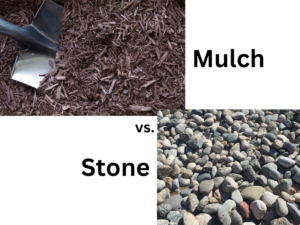From Patchy to Perfect: How to Bring Your Lawn Back to Life This Fall
After our hot summer and dry fall, your lawn has taken a beating. Also, kids may have played in the yard this summer, and you may notice bare patches where the grass has stopped growing.
You’re probably frustrated that your beautiful lawn looks worn out. What can you do to revive it before next spring?
It’s simple. Your Jamison lawn needs professional aeration and overseeding. At Jamison Lawn Care, we provide aeration and overseeding services to revive tired lawns.
If you choose not to invest in aeration and overseeding services now, your lawn will continue to deteriorate throughout the winter.
At Jamison Lawn Care, we recommend our three-step process for revitalizing your lawn: aeration, overseeding, and fertilizing.
Continue reading to learn more about aeration, overseeding, and fertilizing that prepares your lawn for winter slumber and a deep green up in the spring.
Loosen Up the Soil & Give Grass Room to Breathe
When we aerate your lawn, we use a core aerator that mechanically pulls small soil plugs from your yard. Aeration allows carbon dioxide to be released from the soil.
Aeration also breaks up compacted soil, allowing it to receive oxygen, water, and fertilizer, which can reach the root zone. This process also allows improved seed-to-soil contact during overseeding.
You may be worried about those soil plugs. You don’t need to because they’ll break down and add nutrients to the soil.
Learn more: Core Aeration and Overseeding Keeps Your Lawn Happy
Fill in Patchy Grass to Fuel New Growth
We recommend overseeding your lawn soon after we aerate it, since the soil is now prepped for it. Our grass seed blend fills in those bare areas and thickens your lawn. Overseeding also helps build turf density, resulting in fewer weeds.
After we reseed your lawn, we’ll apply starter fertilizer to help the new turf develop quickly and establish strong roots.
Overseeding and fertilizer not only help seedlings grow but also help turf develop deep roots, ensuring a greener, healthier lawn next spring.
Read more: Pre-Aeration and Overseeding Care Tips for Success
After we’ve completed aeration and overseeding, you’ll need to water your new lawn every day until the seedlings start to emerge from the ground.
Professional Tips for Watering Your Overseeded Lawn
There are two phases for watering your overseeded lawn. Experts recommend watering earlier in the day to avoid moisture sitting on top of the grass blades overnight.
In phase one, your newly seeded lawn will need daily watering for 10-14 days to support germination. If there is no rain in the forecast, you must lightly water your turf to keep the topsoil moist.
After the initial two weeks, you’ll still need to water your overseeded lawn to prevent the seeds from drying out. Mist the area so the first inch is wet. You can use a soil probe or a ruler to measure the 1” mark.
In phase two, the mature seedlings have germinated, and you shift from daily misting to infrequent, deep watering.
You want the water to hit the root zone, which is 4-6” deep. Your lawn needs 1.5” of water per week—and that includes any rain that Bucks and Montgomery Counties receive during that time.
This deep, infrequent watering encourages improved root growth, allowing roots access to extra nutrition and moisture during the winter.
Once your lawn can be mowed, you can cut back on watering as long as there’s regular rainfall.
When your lawn greens up and grows densely without weeds, you’ll be glad that you invested in our aeration and overseeding services.
Schedule Your Fall Lawn Services Before It’s Too Late
Don’t let another season go by with patchy grass and compacted soil. Let us handle your fall aeration and overseeding needs so you can look forward to a green, thick lawn next spring.
Schedule your services today and take the first step toward a vibrant spring lawn.
Sources:
Extension.UMD.edu, Care and Maintenance of a Lawn after Seeding.





